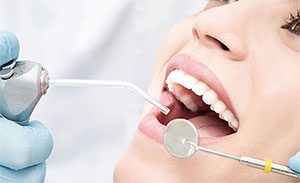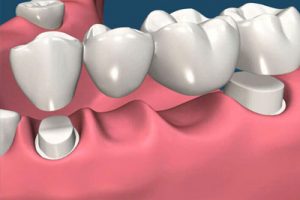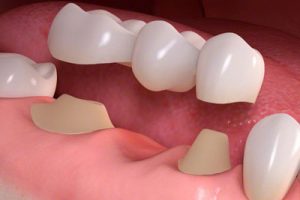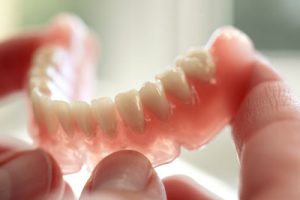Filling
 Filling is done when there is a minor damage to the teeth or cracked or damaged by tooth decay. As compared to traditional methods earlier amalgam metal was used for fillings, but now tooth-colored, composite resin fillings are offered as a superior choice for patients to resolve their issues. In the amalgam process a combination of tin, silver, mercury, and copper are mixed to apply in the missing area, while the tooth-colored resin enters the pit of the decayed or damaged tooth. These both types of curing will help fill and fit to give you the perfect restoration. Offering many types of metal and tooth colored restorations your teeth problems would be solved saving your time, pain and money.
Filling is done when there is a minor damage to the teeth or cracked or damaged by tooth decay. As compared to traditional methods earlier amalgam metal was used for fillings, but now tooth-colored, composite resin fillings are offered as a superior choice for patients to resolve their issues. In the amalgam process a combination of tin, silver, mercury, and copper are mixed to apply in the missing area, while the tooth-colored resin enters the pit of the decayed or damaged tooth. These both types of curing will help fill and fit to give you the perfect restoration. Offering many types of metal and tooth colored restorations your teeth problems would be solved saving your time, pain and money.
Our comfortable and non-invasive treatment for restoration will;
- Bring back your smile
- Fill in the missing area between teeth
- Repair tooth decay & broken teeth
- Help in regular eating and chewing habits
- Stop pain in mouth and jaw
- Stop loss of tooth loss in future
Extraction

An extraction is considered when a tooth is beyond repair or when a patient is suffering from advanced periodontal disease. Before a tooth extraction takes place, first X-rays are done so to help plan the extraction procedure. Once method is planned, local anesthetic is given to the patient to prevent the feeling of discomfort which happens during the procedure. After which the affected tooth is removed.
Some common indications for getting a tooth extraction are:
- Decay of the tooth structure
- Gum disease
- Infection
- Fracture of a tooth
- Wisdom teeth having no space to maintain
- To get braces
Types of Extraction
Simple Extraction
This extraction is performed in a regular manner where a tooth is ready to be removed having minimal complications.
Surgical Extraction
This method is used for complicated tooth removals. The complication can be of broken teeth at the gum level or when a tooth has curved roots. Here bone is removed when the tooth needs to be extracted.
Root Canal Treatment
 Root canal treatment is required when problem arises from having;
Root canal treatment is required when problem arises from having;
- Severe gum disease
- Infection due to deep decay or a large filling
- Physical strike on the tooth or the opposite of jaw
Also called as endodontic therapy, root canal therapy cleans out the infected tooth pulp and disinfects the tooth canals. Its alternative method is to extract that tooth. Once the infection is taken care of, the canal is filled in to prevent any infection. More so, a dental crown is placed typically to protect the treated tooth.
Further root canal treatment helps a patient to be relieved of pain and swelling caused in the mouth due to cavities or decayed or damaged teeth. This procedure allows maintaining a natural smile and brings your teeth back from the brink of extraction with full health.
As for a long lasting case, good eating habits, hygiene and regular visits to the doctor will ensure you a happy life for root canal therapy.
Crowns
 Dental crowns help damaged teeth through replacement of one or more consecutive lost teeth. Crowns are the covers that completely restore a damaged tooth’s lost structure and protect what’s left of the damage. A crown not only strengthens a tooth, but also improves its appearance, shape and alignment.
Dental crowns help damaged teeth through replacement of one or more consecutive lost teeth. Crowns are the covers that completely restore a damaged tooth’s lost structure and protect what’s left of the damage. A crown not only strengthens a tooth, but also improves its appearance, shape and alignment.
Types of Crowns
- Metal Crowns
- Porcelain fused to metal
- All Porcelain Crowns
Metal Crowns durability and non-reactive characteristics helps them to be a preferred choice as dental crowns. As they don’t give a natural look metal crowns are mostly used on the molars where they are not visible to others.
Porcelain fused to metal crowns has a metallic surface under a ceramic layer that looks as natural as tooth enamel.
All porcelain crowns give the most natural look and are indistinguishable from the natural teeth. Due to technological advancement they appear and act as strong as metal and porcelain fused to metal
Bridges
 A bridge refers to a device that fills the space of the missing tooth. Here an artificial tooth is attached to the adjacent teeth for support that creates a bridge. The bridge functionally and cosmetically replaces the missing teeth. When a bridge is used, the tooth on either side of the missing one is carefully placed to serve as anchors.
A bridge refers to a device that fills the space of the missing tooth. Here an artificial tooth is attached to the adjacent teeth for support that creates a bridge. The bridge functionally and cosmetically replaces the missing teeth. When a bridge is used, the tooth on either side of the missing one is carefully placed to serve as anchors.
There are types of bridge material used which depends on:
- Color and appearance of tooth
- Surrounding tissue which forms the contour of the bridge
- Functioning like biting and chewing
- Restores lost teeth
- Supports remaining teeth
- Helps maintain dental health
- Restores smile
- Helps in natural biting and chewing
- Maintains shape of face
- Gives no stress on adjacent teeth
- Prevents further dental decay
Bridge Treatment Benefit
These bridges last many years due to its durability. But may also need replacement or re-cementation due to normal wear-ability properly checked and cemented by a dental doctor so that a proper fit can be adjusted.
Dentures
 Dentures are removable dental equipment that replaces missing teeth and surrounding tissue. If numerous or full teeth are missing then dentures offer complete restoration of the lost dental structure as they resemble like the natural teeth.
Dentures are removable dental equipment that replaces missing teeth and surrounding tissue. If numerous or full teeth are missing then dentures offer complete restoration of the lost dental structure as they resemble like the natural teeth.
Denture supports cheek and lips and gives a vibrant appearance that also helps in speaking, chewing, swallowing and smiling.
Types of Denture
- Partial dentures
- Complete dentures
A partial denture fills the gap of the missing teeth by making use of clasps that hold on the remaining teeth for achieving stability.
A complete denture replaces all of the missing teeth that form between the surface of the denture and gum tissue. Here implants may also be used to stabilize dentures. Upon total loss of the tooth conventional dentures are placed in the mouth so that gums can be healed. Immediate dentures are also used after extraction, but immediate dentures do not heal tissue and the bone to settle. Because it requires adjustments over time to fit.
Gum Treatment
 This treatment solves issue related to gum and jaw bone diseases. As gum diseases have its several types, the treatment is also performed according to different levels.
This treatment solves issue related to gum and jaw bone diseases. As gum diseases have its several types, the treatment is also performed according to different levels.
Gum disease infection begins with bacteria-ridden plaque that irritates the gum tissues. If proper brushing or flossing is unable to remove plaque then it turns into a hard substance called tartar. If tartar is formed around the gum line, then it breaks the healthy attachment between gums and teeth, which further allows bacteria and plaque to disrupt the tooth roots.
Gum Disease Stages
There are three progressive stages associated with gum disease:
- Gingivitis is the first stage where bacteria cause gums to swell and bleed.
- Periodontitis damages soft tissues around teeth and destroys the bone that supports them.
- Advanced Periodontitis makes gums, periodontal ligaments and bone so damaged that the teeth begins to lose.
Gum disease treatment involves professional teeth cleaning where a dentist removes hard tartar deposits using a special instrument. Also a scaling and root planning procedure may be performed so to remove plaque and tartar below the gum line.



